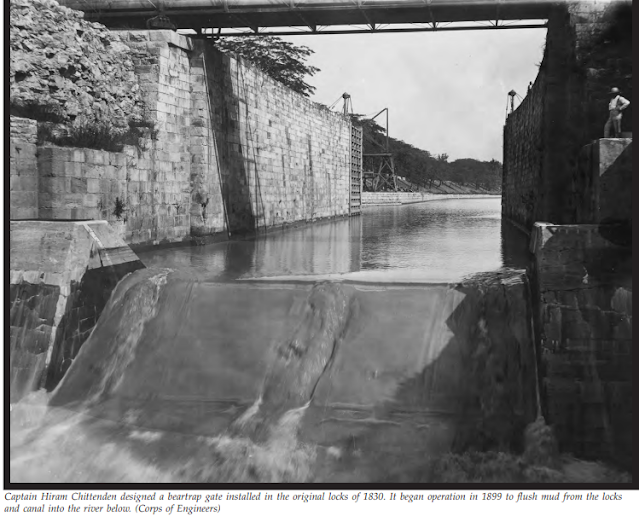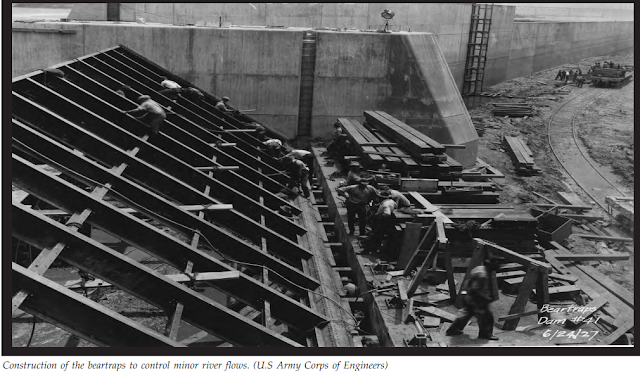Jan 3, 2023 Update: This video is a lot easier to understand than the text below.
The gates of a Bear Trap Dam raise up from the riverbed to increase the level of the upper pool and the flow of water is over the gates. This allows floating debris such as trees and ice to continue flowing downstream. Other gate designs such as
sluice and
traditional Tainter gates release the flow under the gate and thus obstruct floating debris.
 |
Diagram from US Government
Bear trap gates consist of two leaves. When in the lowered position, the upstream leaf overlaps the downstream leaf. The gate is raised by applying upper pool pressure to a chamber under the leaves. This pressure, sometimes supplemented with air or hydraulic cylinders, raises the dam gate. These gates generally retain a pool differential of 20 ft or less and are normally about 90 ft wide. They are ingeniously conceived but can prove difficult to maintain. Silt or sand deposits in or under the gates are particularly likely and may make it impossible to fully lower or raise the gates. |
Ohio River, search for bear. This is one of those neat sites where I could spend soooo much time browsing.







Wow! This is so helpful! thank you Dennis!
ReplyDelete